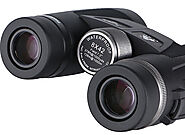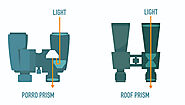-
About
- About Listly
- Community & Support
- Howto
- Chrome Extension
- Bookmarklet
- WordPress Plugin
- Listly Premium
- Privacy
- Terms
- DMCA Copyright
- © 2010-2025 Boomy Labs

 zaa yo
zaa yo
Listly by zaa yo
There are wide selection of binoculars available, they are all different and all having their best uses. When choosing the binoculars, it is always important to know, what you are going to do with it, and where you're going to do that with it. Here in this article we shall talk about choosing your best binoculars for birdwatching.
Source: https://www.yozaa-optics.com/about-binoculars-for-birdwatching

a few terminologies you need to know before choosing your best binoculars for birdwatching. Check out this Binoculars Buying Guide for more detailed elaboration on the terminologies.
For birding binoculars, the most important specifications are: Fiew of View, Magnification, Objective Lens Diameter, size & weight.
is the image of the world you see while looking through the binoculars. A wide field of view indicates that you are going to see a very wide span of the world in front of you; whilst a narrow field of view tends to close in the image of world you see. For birdwatching, it is good idea to have as wide field of view as possible, so that you'll be able to see the birds more easily and quickly, and follow them on all possible directions as they take off.
Generally speaking, the field of view is directly related to the magnification power of your binoculars, the higher magnification, the narrower field of view. Someone may have told you that the objective diameter may effect the field of view, but trust me it doesn't.

For general birdwatching, binoculars with 6 - 8x (or something in the neighborhood) magnification are recommended. Generally speaking, 6-8x magnification comes with a field of view around 7°, so that you can keep everything in view and not to loose the bird when they suddenly take flight. And these binoculars with lower magnification produces stabilized image when held with hands.
Of course, if you are going to watch the birds at a "stationary" occasion, at feeding station for example, a stronger magnification binocular like 10x or 12x can be preferable to get better details.
Objective lens diameter effects two things: the brightness (quality) of image and the weight of binoculars.
The bigger objective lens diameter, the more amount of light comes into the binoculars so that you can get better image. However, as you increase the objective lens diameter, the weight of the binoculars tends to increase as well, and as weight increases it becomes less comfortable to carry and held the binoculars.
Generally you need the objective lens diameter at least 4x the magnification to get nice and bright images. Anything smaller than that is called "compact binoculars", which has their use but for a full days in the field it is good to have one of these "full size" binoculars, 8x32 or 8x42 for example.
As you shall be walking around carrying the binoculars all day long, it is best to choose the binoculars with small size and light weight.

Porro is a traditional binoculars shape with wide shoulders. Porro prism binos are easy to differentiate from other binoculars due to their zigzag shape design. This makes them heavier than other binocular sets. However, they can give you a much clearer 3D image than other binocular sets along with a much larger field of view. Despite the zigzag, they’re actually the simplest design, which means they’re much cheaper to produce and to buy.
Roof prism binoculars are tends to be the most popular right now, they are streamlined, smaller, lighter, more robust, easier to waterproof, and much easier to carry around than the bulky Porro-style binos. Historically, roofs were burdened by a phase-shift issue on one surface and a lack of internal reflection on another, requiring a silver or aluminum mirror coating on that surface. But modern roofs fix both problems by using a special phase coating to eliminate the phase-shift and a dielectric coating for the applied mirror. These coatings, however, increase the production cost, that is one of the reason why Roof prism binos are generally more expensive than Porros of equal quality.
We have selected our best binoculars for birdwatching for you! Check it out Binoculars for Birdwatching.
